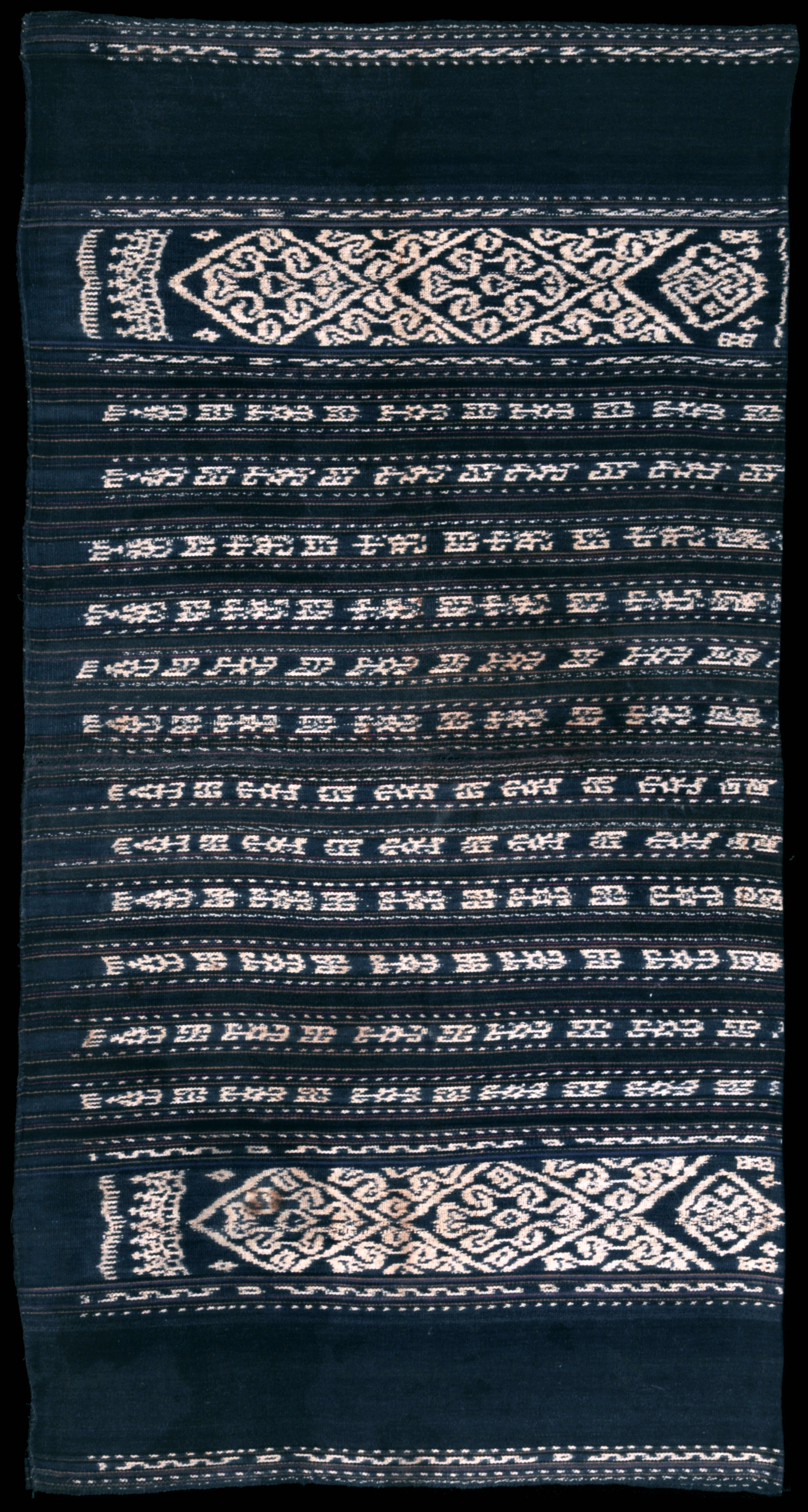| |
 mouse over to magnify mouse over to magnify
| | | | 109 Moluccas, Babar
Roie irai (sarong)
| | Locale: | Probably Wetan island. | | Period: | 1890-1930 | | Panels: | 2 | | Design: | Narrow bands with geometrical patterns in white on indigo, two broad bands with larger geometrical designs framed by lozenges (similar to Timorese Amarasi natam koroh motif). Pinstripes in ochre, which appears to be natural, cyclamen, and purple - which appears be fuchsine, the second earliest chemical dye stuff. | | Size: | 81 x 151 cm (31.8 x 59.4 in) | | Weight: | 940 g (384 g/m2) | | Yarn: | Cotton, hand-spun, coarse | | Comment: | Old sarong from Babar archipelago, probably (as stated by well-reputed seller) from Worili village on the remote island Wetan. Comparison with very similar Wetan sarong in Rautenstrauch-Joest Museum confirms this assumed provenance. Sturdy, heavy cloth, with bold, clear patterning. Some smudges and a circular rust stain on one face, other face only slightly smudged. Ex collection Verra Darwiko. | | Background: | Additional information in chapters on Moluccas and Babar. | | Published: |
Woven Languages, 2014.
Ikat Textiles of the Indonesian Archipelago, 2018.
| | Compare: | 196 198 354 | | Sources: | Striking resemblance to several of the sarongs worn by women from Babar on photograph from 1913 in De Jonge and Van Dijk, Forgotten Islands, Plate 8.6. See also Fraser-Lu, Handwoven Textiles, p.204: natam koroh motif. Very similar sarongs in Khan-Majlis, Indonesische Textilien, Wege zu Goettern und Ahnen, Fig. 567 and Fig. 568, though ours has more intricate motifs, often an indicator of greater age. Motif in main ikated band similar to that on Wetan sarong from before 1940 in Tropenmuseum, Nr. 1772-1213. Ex collection Verra Darwika. | | |
 ©Peter ten Hoopen, 2025
All rights reserved.
|
|


